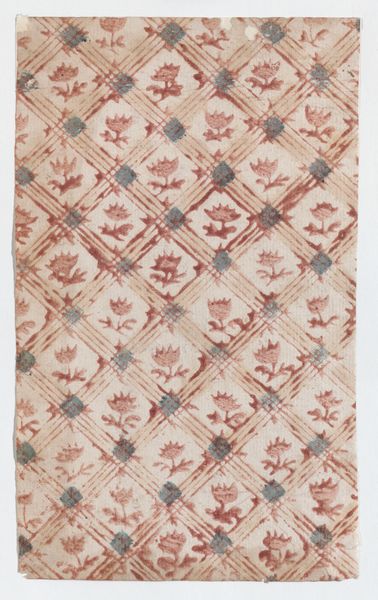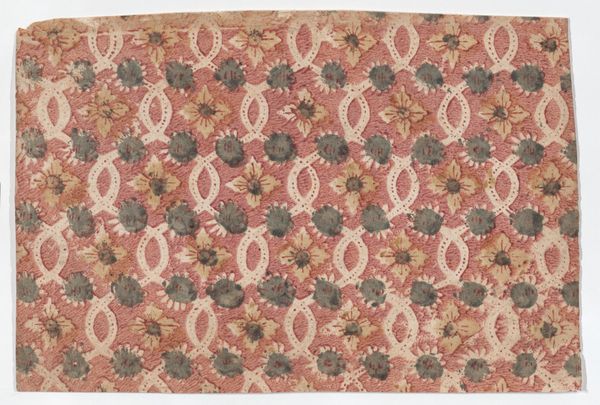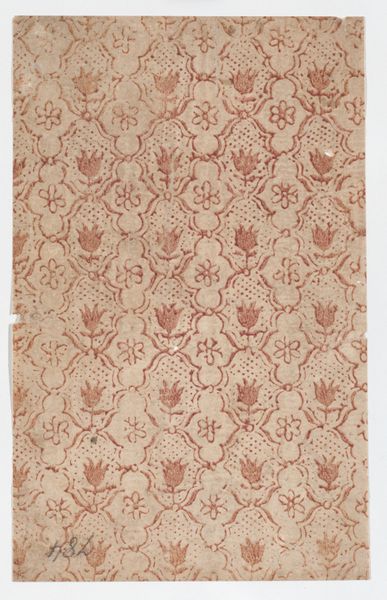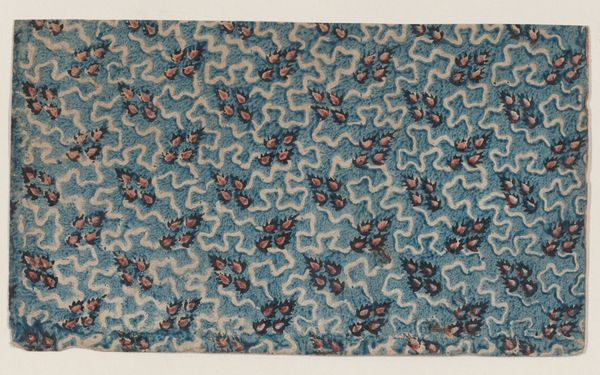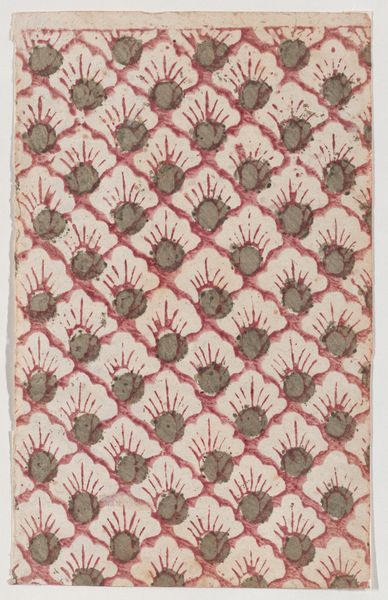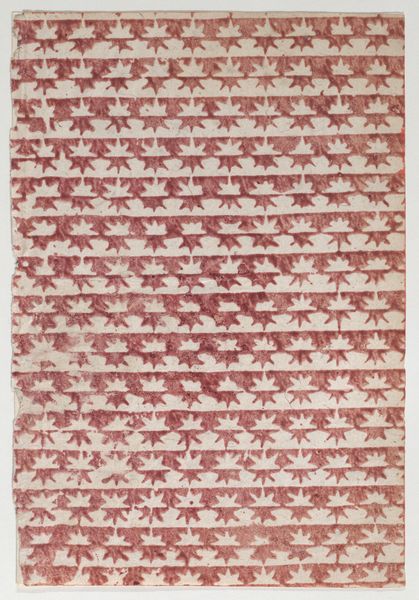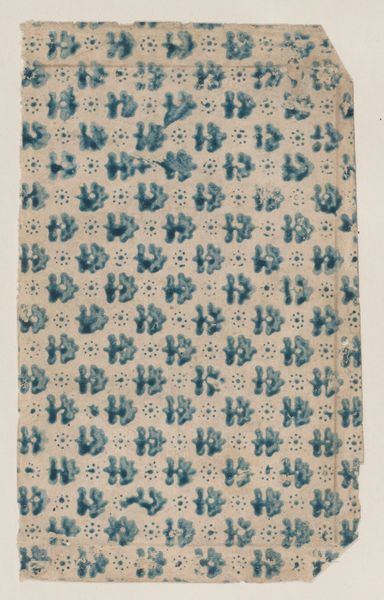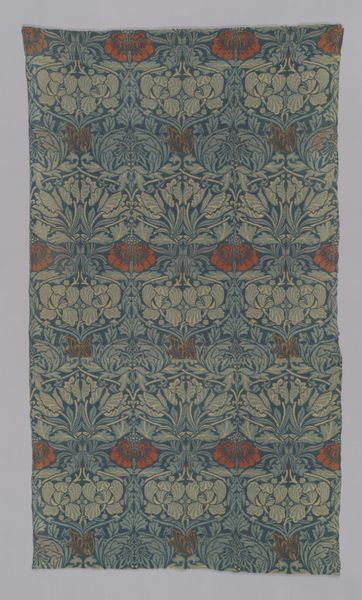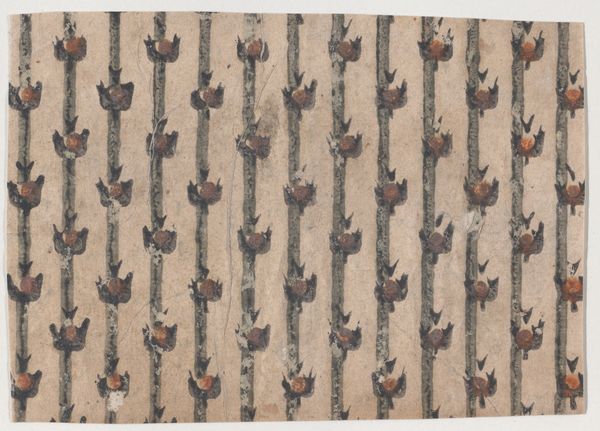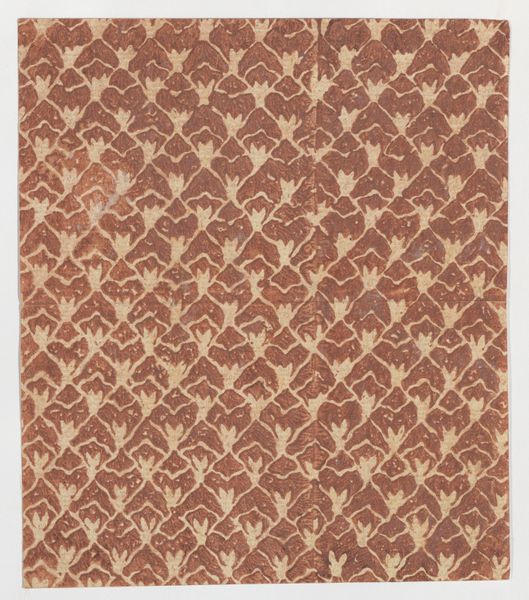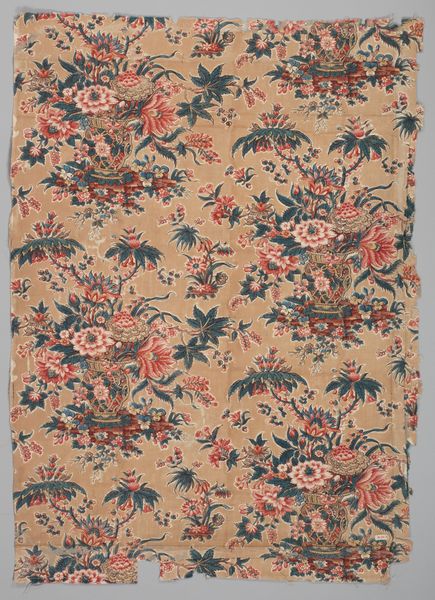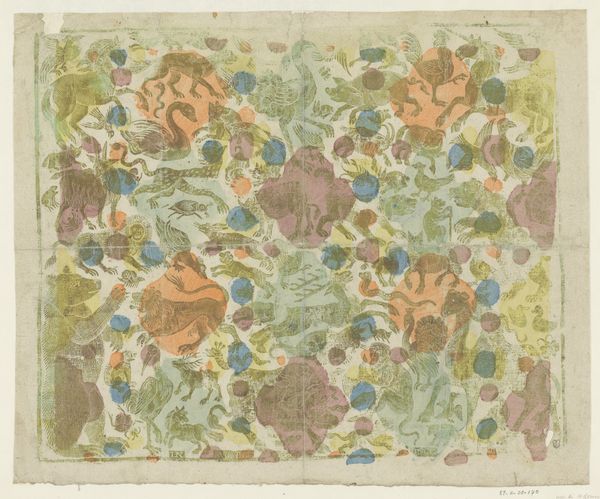
print, textile, paper
#
natural stone pattern
#
naturalistic pattern
# print
#
textile
#
paper
#
organic pattern
#
pattern repetition
#
watercolour bleed
#
textile design
#
imprinted textile
#
layered pattern
#
organic texture
#
watercolor
Dimensions: Sheet: 6 1/8 × 4 3/16 in. (15.6 × 10.6 cm)
Copyright: Public Domain
Curator: This is a drawing entitled "Sheet with overall pattern of tulips," created sometime between 1800 and 1900 by an anonymous artist. It's currently held at the Metropolitan Museum of Art. Editor: It strikes me as humble and utilitarian, something more about everyday use than high art. Almost a fragment of a larger piece of decorative art—the colours are beautifully faded too. Curator: The tulip, originating from Turkey and popularized in the Netherlands, certainly has a loaded symbolism, often linked to wealth, prosperity, and even fleeting beauty. Its popularity in patterns like these suggest a wide cultural appeal. Editor: It is indeed tempting to trace those social routes. This piece looks very much like block-printed cotton or linen, so that repeated form implies a skilled craftsperson meticulously carving wooden blocks. Each impression carries weight – both materially and culturally. The design indicates repetitive labour which invites reflection upon consumption. Curator: You can definitely see a blend of craft and cultural meaning in this, right? A simple flower elevated by pattern, made meaningful by how humans organize and replicate it, lending the design a ritualistic quality. The colours bleed slightly giving an organic texture... Editor: Yes, these 'imperfections' are where materiality is exposed, isn’t it? That bleed and layered effects expose how much the material dictates the final effect. These choices weren’t accidental; they emerged via specific engagement and manipulations to arrive at certain end. Curator: It invites questions of authenticity. Given this level of pattern making was largely commercial during that era, do you think this "tulip-mania" channeled aspirations and anxieties relating back towards the flower’s associations with abundance and vanity? Editor: Definitely, but with one difference, for consumption like furnishing etcetera it gives access to people lower down economic structure of things that can carry a signifier status like these flowers while maintaining that economic division even via patterns. Curator: That intersection feels crucial in understanding our object. Both a pretty reminder of beauty but something with deeply practical implications Editor: And maybe that accessibility – the sheer act of multiplication through materials – subverts, even critiques that initial show of status, which ultimately brings democratisation of image to consumer.
Comments
No comments
Be the first to comment and join the conversation on the ultimate creative platform.
